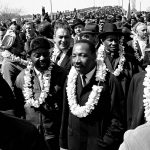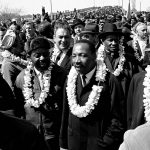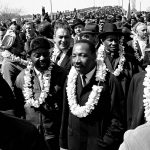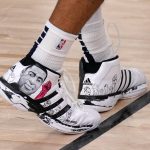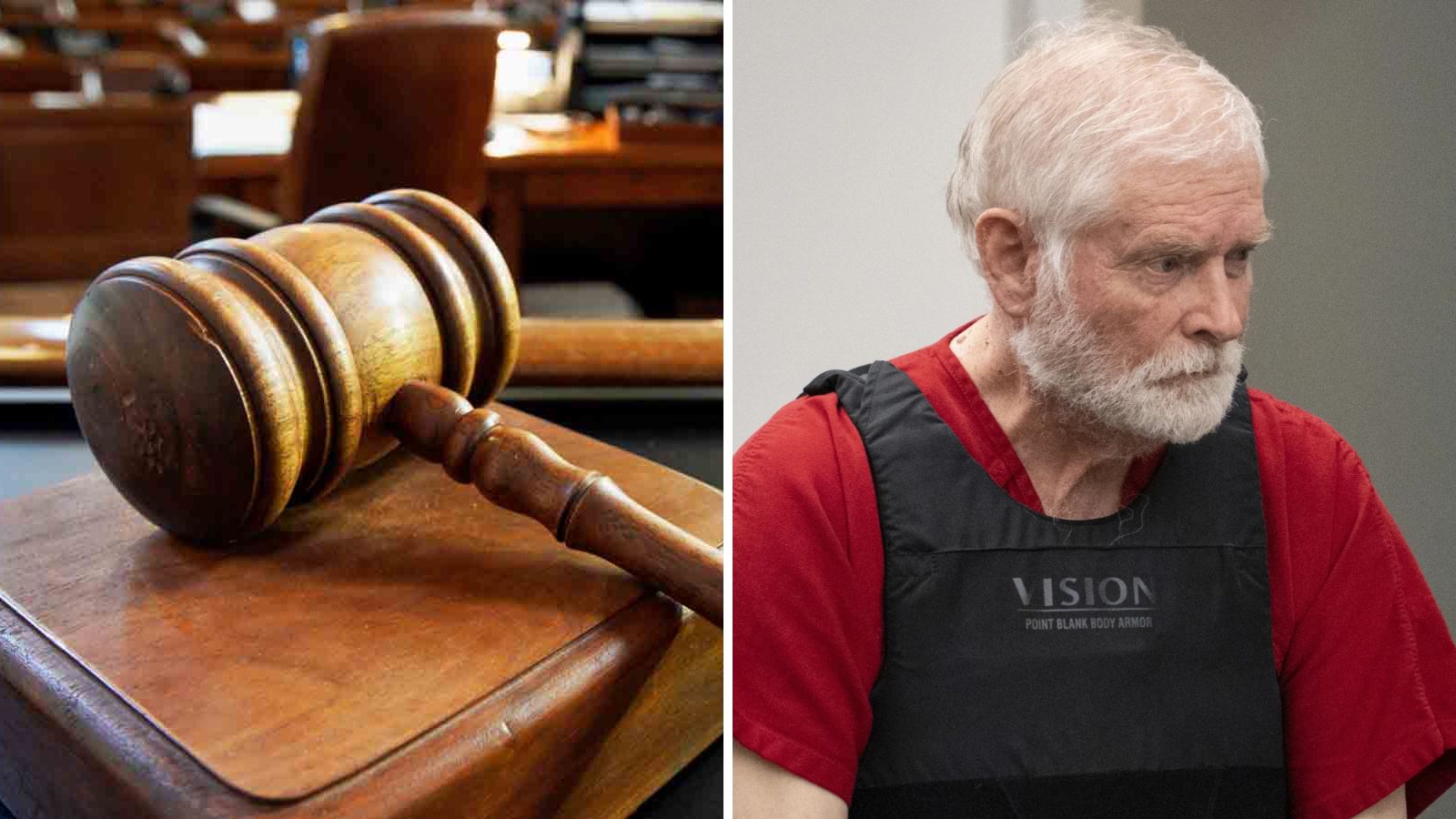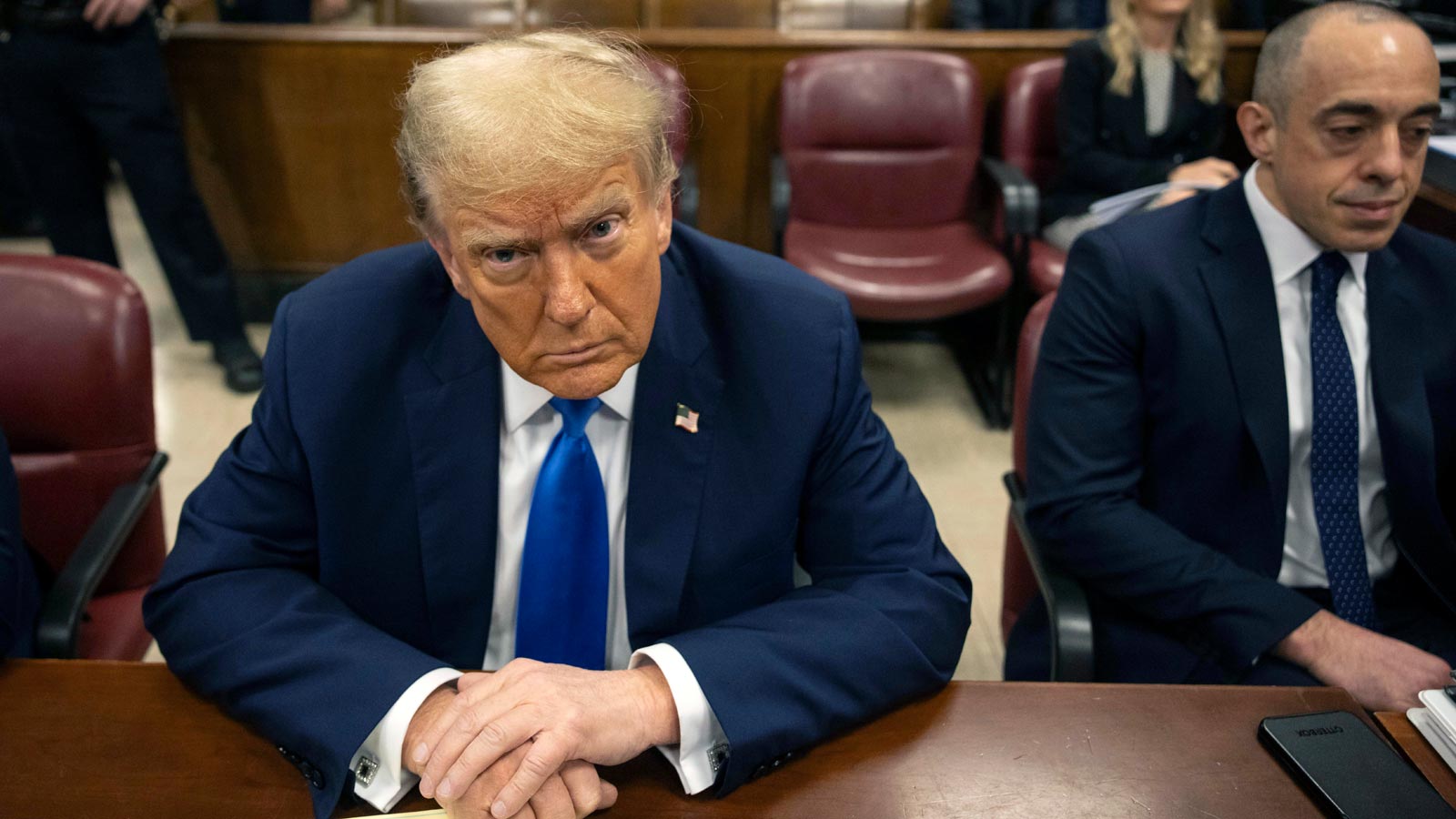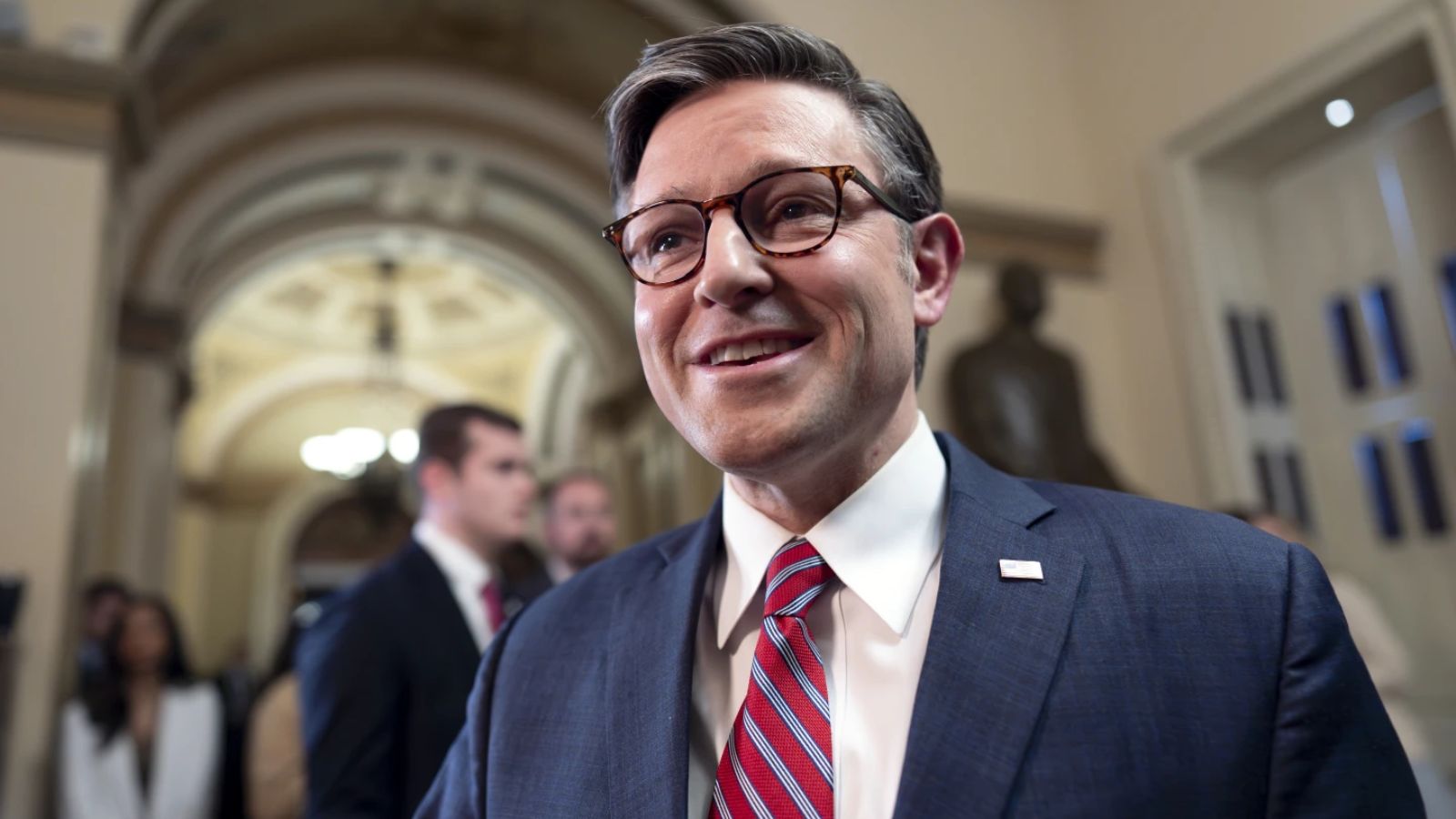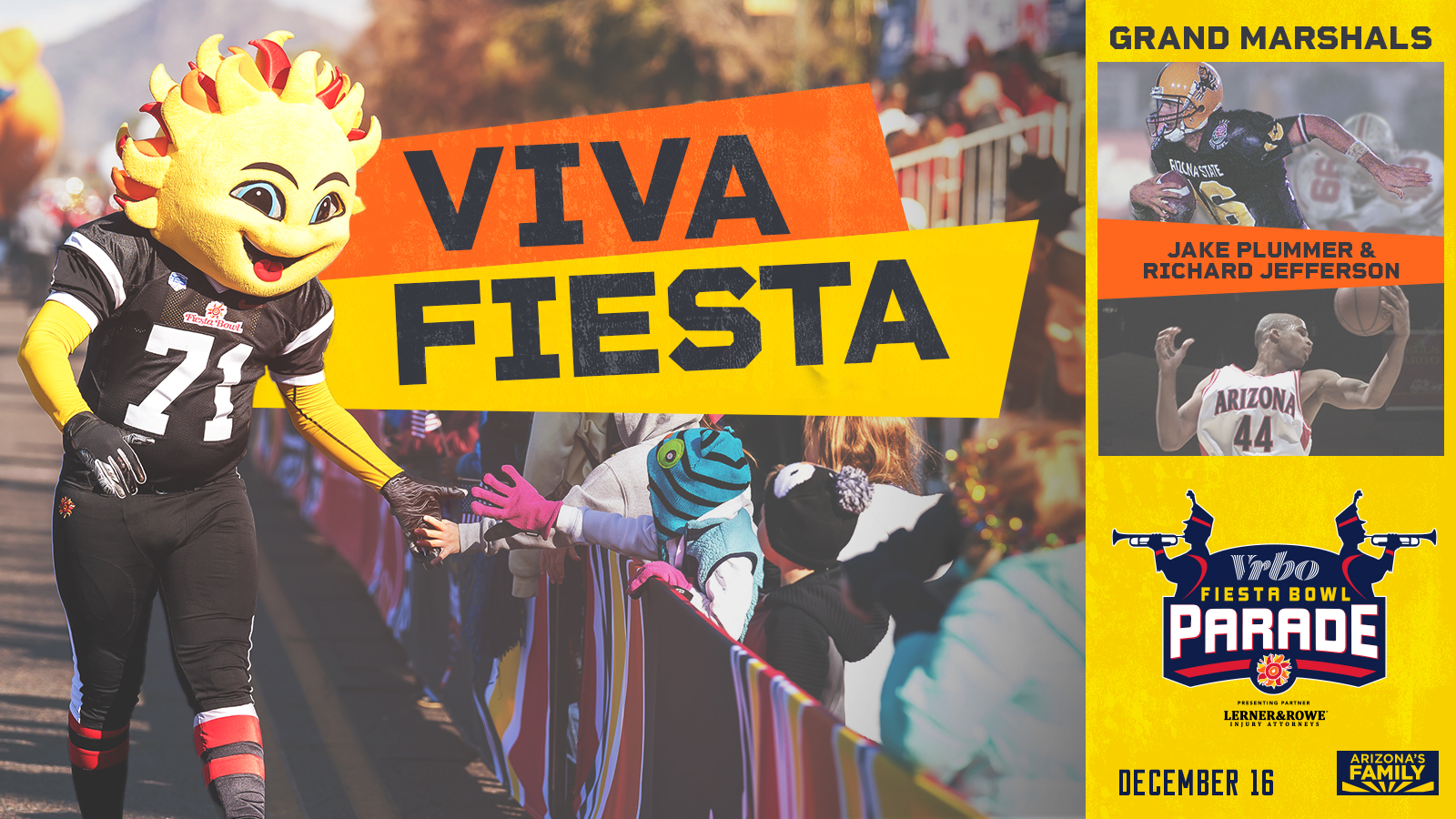NBA laid key foundation during 1960s amid off-court chaos
Nov 22, 2021, 12:35 AM | Updated: 10:35 pm
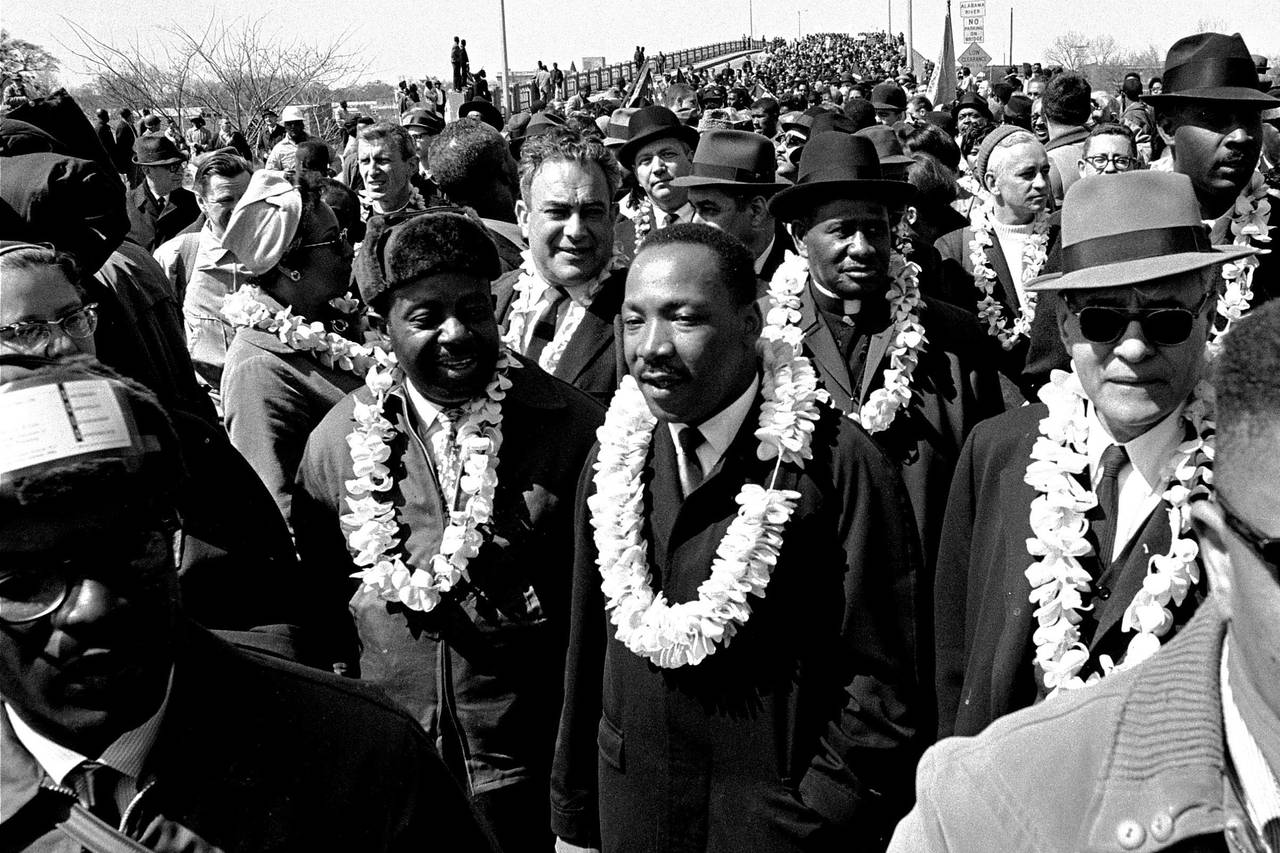
FILE - Martin Luther King, Jr. crosses the Edmund Pettus Bridge in Selma, Ala., heading to the capitol in Montgomery on March 21, 1965. (AP Photo/File)
(AP Photo/File)
BOSTON (AP) — Sam Jones remembers the NBA landscape in the 1960s being only marginally different from what he had experienced growing up in America’s segregated South.
“There was a quota for Blacks when I came in 1957. There were only two players on each team that were African-Americans,” recalled Jones, a member of 10 Boston championship teams, including the eight consecutive titles the Celtics won from 1958-66.
The 1960s was the decade Wilt Chamberlain scored 100 points, the Celtics-Lakers rivalry took flight and the NBA’s second dynasty reigned on the Boston Garden’s parquet court.
It was also a time of ongoing struggle and crisis across America, when the country was forever altered on a “Bloody Sunday,” Dr. Martin Luther King Jr. spoke of his dream and Black athletes raised their fists and voices in hopes of holding America to its creed.
In its infancy just 10 years prior, the NBA took its first meaningful strides in the 60s, growing from the little league that could barely get attention, to laying the framework it still stands on today — a place where athletes can be more than entertainment and use their influential platform to effect change.
George Mikan and the Lakers’ run of championships in the 50s had provided some buzz around the NBA. Boston then followed with eight consecutive titles — part of 11 in 13 years won by Hall of Famer Bill Russell — the kind of on-court dominance the young league had never seen before.
Still, games were barely being broadcast on television in the ’60s and the titles didn’t come with the fanfare that are afterthoughts today. Jones, who turned down his first contract after being drafted by the Lakers following a two-year stint in the Army, said: “We never flew first class in my 12 years of playing.”
And the on-court success certainly didn’t shield the league’s Black players from the realities that existed off the court as activists challenged Jim Crow’s grip in the South and the Vietnam War was becoming an increasing flashpoint.
Players who spoke out risked everything.
“What we did, we did kind of behind the scenes as best we could, because a lot of us were insecure at the time because there weren’t that many of us begin with,” said Wayne Embry, who played 11 seasons in the NBA and was on the Celtics’ 1968 championship team before becoming the league’s first Black general manager in 1972. “When you are on non-guaranteed contracts… if management didn’t like what you were doing, you were gone.”
That awareness was a common thread among players who challenged the status quo.
“Sacrifice is what strongly characterizes an activist,” said Len Elmore, who played 10 seasons in the NBA and is a senior lecturer at Columbia University where he’s taught on athlete activism and social justice in sports. “Back in those days those guys could have not only lost their positions but been forgotten by history.”
Even star players on premier teams weren’t immune from indignities of racism.
“There were a lot places we couldn’t eat,” Jones said. “If the hotel where we were staying was closed, we had to find a Black section to get food late at night. … So sometimes we’d just have to wait until the next morning to get food.”
Jones said Black players in Boston had a champion in Red Auerbach, who ruled at the helm of the Celtics’ dynasty.
Auerbach was known for his demanding style (Jones describes Auerbach as a “taskmaster” and said at times he “overdid it”), but the coach also recognized how his players were affected by what was happening in the world. Sam Jones remembers one example in 1961, when he, K.C. Jones, Satch Sanders and Russell refused to play in an exhibition game in Lexington, Kentucky.
The team was in its hotel when Sam Jones asked Sanders to go to the lobby to get some food. They were refused service.
“And so I told Satch, ‘I’m going home,'” Jones recalled. “And I said, ‘I don’t care what you do, I’m going home and I’m not going to play in this game.'”
The duo went to the elevators where they were met by Russell and K.C. Jones. After Sam told them what had happened, Russell implored them to talk to Auerbach.
Auerbach called the hotel manager, who quickly relented and said he’d allow the players to eat in the restaurant. It wasn’t enough for Sam Jones.
“Once we eat in the hotel, Blacks will never eat down here again until something happens. So I’m going home,” he told Auerbach. “And the rest of the fellas decided that they would go home also. And Red took us to the airport.”
Jones credits Auerbach for supporting players when others in his position were shying away from racial issues in a city with a complicated history.
While the Celtics and Bruins broke the color barrier in their sports, the Red Sox were the last Major League Baseball team to field a Black player in 1959. And a decade after the Supreme Court’s landmark Brown vs. The Board of Education decision in 1954 declared schools separated by race to be unequal, Boston fought desegregation measures by its state legislature. It led to violent protests over court-ordered busing in the 1970s.
“He knew that we were men. We were not children,” Jones said. “You got to understand that the Celtics were the first to draft a Black player. Celtics were the first to have a Black coach. The Celtics were the first to start five Black players in the NBA. So there was a lot of things that the Celtics did first for the African-American.”
It’s also why Elmore believes it made sense that Auerbach tapped Russell to be the team’s player-coach when Auerbach retired following Boston’s title in 1965-66. Russell led the team to a pair of titles in the dual role in 1967-68 and 1968-69.
“Auerbach was a prescient man,” Elmore said. “He saw where the league was going.”
There was no escaping the issues for Black players, prompting Russell to tell reporters in 1964: “I’d rather die for something than live for nothing.””
For a player of Russell’s prominence to show a willingness to put his convictions ahead of his athletic career put him in a small group during that time like Muhammad Ali, Lew Alcindor (now Kareem Abdul-Jabbar) and Jim Brown.
And it was Russell, Abdul-Jabbar and Brown showing support for Ali in Cleveland in 1967 two months after the boxer refused induction into the U.S. military to fight in Vietnam.
Those social and political stances have threaded today’s generation of athletes, seeding everything from Colin Kaepernick’s national anthem demonstrations to athletes across the sports world advocating for justice in 2020 following the deaths of George Floyd, Breonna Taylor, Ahmaud Arbery, and others.
Russell’s actions also inspired others in the 1960s, like when Black and white players led by Jerry West, Oscar Robertson and Elgin Baylor nearly refused to play in the 1964 All-Star Game over a dispute with owners about labor conditions.
The NBA was about to broadcast live for one of the first times and owners stood to reap a huge windfall.
The players barricaded themselves in the locker room and the game was briefly delayed. It forced then-Commissioner Walter Kennedy to recognize the players’ union and commit to their pension plan demands. Robertson became the first Black president of any national sports or entertainment union the following year.
“As far as I’m concerned, that’s the changing of the guard for the player,” West said. “It’s led to the players and the league basically being partners. To me … it’s been an amazing transformation to see what’s happened to the game since then.”
___
AP Basketball writers Tim Reynolds and Brian Mahoney contributed to this report.
___
More on the NBA At 75: https://apnews.com/hub/nba-at-75
___
More AP NBA: https://apnews.com/hub/NBA and https://twitter.com/AP_Sports
Copyright © The Associated Press. All rights reserved. This material may not be published, broadcast, rewritten or redistributed.











